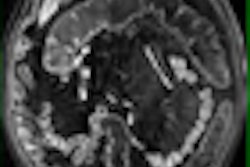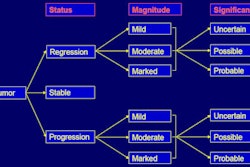Benjamin Franklin is credited for penning: "An ounce of prevention is worth a pound of cure."
When it comes to preventing patients from developing nephrogenic systemic fibrosis (NSF), a new study from Johns Hopkins University (JHU) School of Medicine in Baltimore suggests that imaging providers can reduce NSF incidence by using proper patient screening procedures before MRI scans that use gadolinium-based contrast agents.
The authors also noted that their research supports the belief that NSF is associated with gadolinium administration. Their study was published in the February issue of Radiology (February 2009, Vol. 250:2, pp. 371-377).
The study, led by co-author Javier Perez-Rodriguez, found that the overall NSF incidence rate at JHU decreased from 36.5 cases per 100,000 gadolinium-enhanced procedures to four cases per 100,000 after the U.S. Food and Drug Administration (FDA) issued alerts in June and December 2006 about the association between NSF and gadolinium contrast, and after JHU developed and implemented hospital policies and procedures in January 2007 to assess NSF risk factors in patients.
"Our findings support the association between NSF and administration of [gadolinium contrast] in patients with acute and chronic severe renal failure, with possible cofactors related to events involving a strong immune response or tissue injury," the authors wrote. "Implementation of hospital policies consistent with Food and Drug Administration recommendations regarding assessment of patient risk for NSF in relation to [gadolinium contrast] may reduce the incidence of disease."
Six-year review
The researchers retrospectively analyzed NSF cases at JHU from 2003 to 2008. Thirty-three patients were diagnosed with NSF during those years and had their clinical reports, laboratory tests, and pathology summaries reviewed for the study. The mean age of the patients was 49 years, ranging from 15 to 78 years.
Six of the 33 patients were referred to JHU from other facilities. Thirty-one patients had definitive histopathologic diagnoses of NSF, and two patients had a clinical diagnosis that was deemed sufficient for inclusion in the study.
NSF symptoms were recorded when they were present in a patient for at least three consecutive days and led to a biopsy that resulted in an NSF diagnosis. The incidence of NSF was calculated by dividing the number of detected cases with an index MR procedure (the last procedure in which gadolinium-based contrast was used prior to onset of NSF) by the total number of contrast material-enhanced MR examinations performed at the institution.
The researchers found that of the 27 patients with complete medical records, 23 (85%) underwent gadolinium-enhanced MR imaging as an index procedure, and four received gadolinium contrast during invasive x-ray-based arteriography. Gadolinium dose was not available for six patients. Eighteen of the 27 patients (67%) underwent more than one gadolinium-based MRI procedure during a one-year period.
Gadolinium usage
Gadodiamide was used in 20 of the 27 patients (74%), while gadopentetate dimeglumine was used in seven cases. For MR procedures performed with gadodiamide, the gadolinium dose used in the index MRI examination was 26.5 mL. For procedures performed with gadopentetate dimeglumine, the gadolinium dose in the index MRI exam was 17.1 mL.
The researchers found that the overall incidence rate of NSF was 36.5 cases per 100,000 gadolinium-enhanced procedures for MRI scans performed between 2003 and 2006.
In January 2007, JHU implemented procedures to assess patients with risk factors for NSF, shortly after the FDA issued its alerts in June and December 2006 about the association between NSF and gadolinium.
Following the adaptation of the new standards, JHU's NSF rate decreased to four cases per 100,000 gadolinium-enhanced procedures, "suggesting that the new policy was associated with a significantly lower incidence of NSF," the study reads.
|
JHU School of Medicine policy for the prevention of NSF
Source: Radiology and JHU School of Medicine |
The authors cited the retrospective nature of the study as one limitation. The records for six patients in the 33-patient sample contained only information obtained after the diagnosis of NSF.
"The analysis of progress notes and other records was retrospective and may have introduced bias," they noted. "We took into account only unequivocal clinical descriptions that were accompanied by follow-up information on subsequent days."
The researchers recommended additional research to design a case-control study that will "help us better understand the epidemiology of NSF."
By Wayne Forrest
AuntMinnie.com staff writer
February 4, 2009
Related Reading
ACR committee works toward gadolinium-based contrast policy, October 24, 2008
Hemodialysis helps prevent NSF in some patients, study finds, August 19, 2008
Incidence of nephrogenic systemic fibrosis varies with contrast agents, July 24, 2008
Study questions some NSF risk factors, April 15, 2008
Gadolinium/NSF lawsuits centralized in Ohio federal court, March 21, 2008
Copyright © 2009 AuntMinnie.com



.fFmgij6Hin.png?auto=compress%2Cformat&fit=crop&h=100&q=70&w=100)




.fFmgij6Hin.png?auto=compress%2Cformat&fit=crop&h=167&q=70&w=250)











